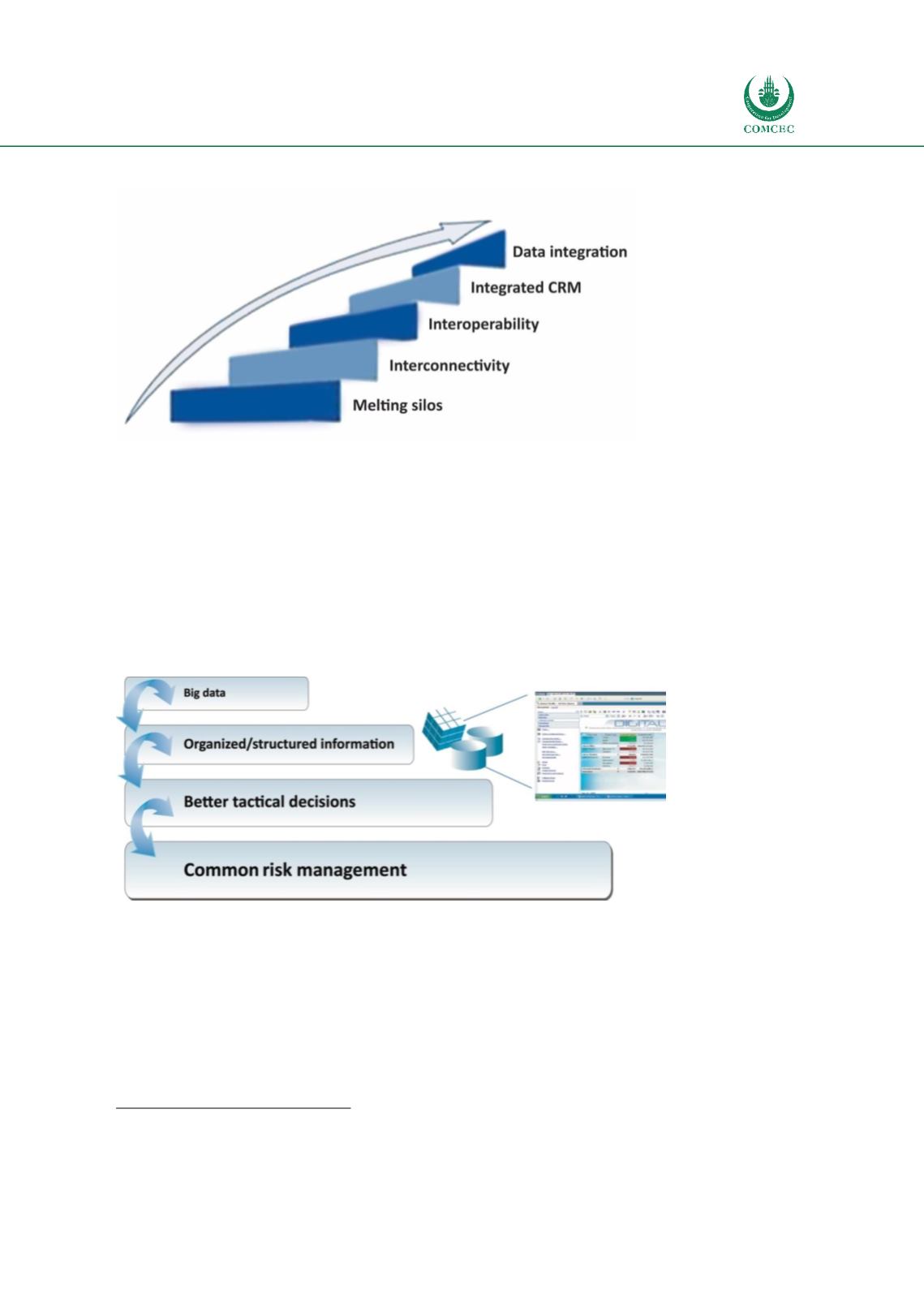

Facilitating Trade:
Improving Customs Risk Management Systems
In the OIC Member States
165
Figure 58: Data Integration steps
Author’s compilation
Use of Big data in CRM Context;
Big data contains clusters of raw data that are disordered and
untidy. More technically, it relies on a broad mix of both structured and unstructured data
formats. This represents a stark change for Customs administrations usually accustomed to
structured data; that is, data from electronic declarations, for example, are well defined by the
WCO Data Model and the EDIFACT family of standards. The “standards” defining big data would
be much more varied, and largely outside of government’s control. The following figure presents
the transformation of the big data in the structured model of information that is crucial for the
CRM (Figure 59).
Figure 59: Big data transformation
Author’s compilation
It is clear that any intentions to exploit the potential of big data will require Customs, on the one
hand, to have a strong mastery of its structured data management and to advance into other
areas to exploit new data on the other hand. The standards are still being written for the areas
of commerce and industry; therefore, Customs administrations seeking data from the business
community will be encouraged to focus their attention on new emerging standards, to benefit
from the ‘sense-making’ potential of big data
88
.
88
http://www.wcoomd.org/~/media/wco/public/global/pdf/topics/research/research-paper-series/39_okazaki_big-data.pdf
















